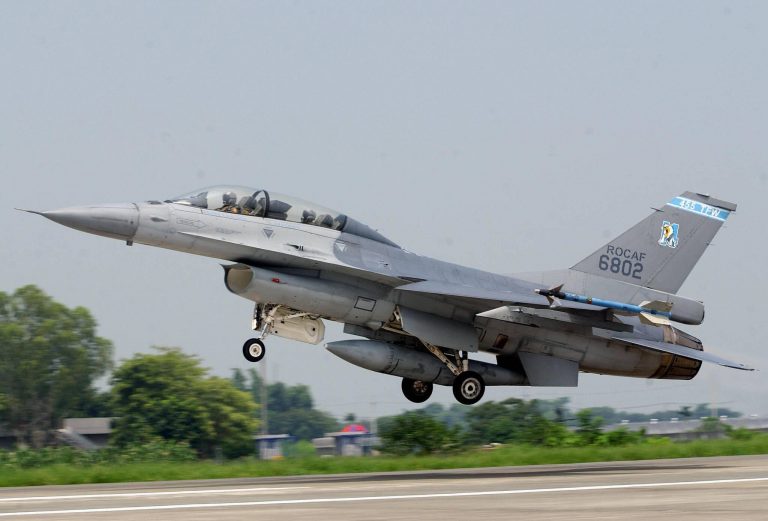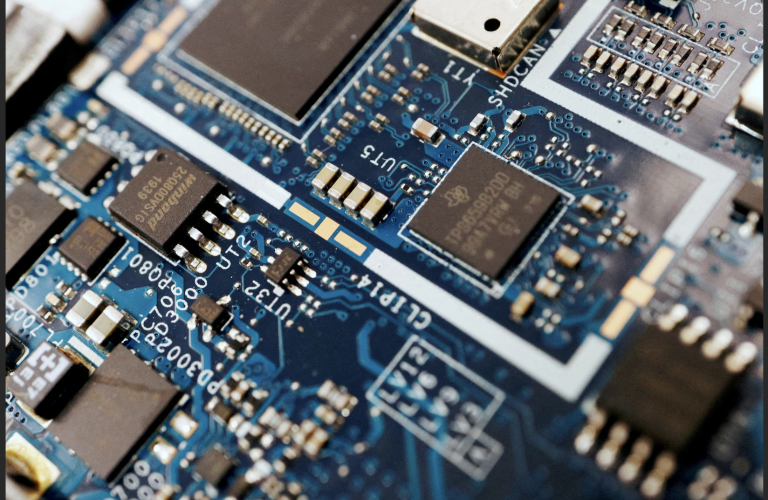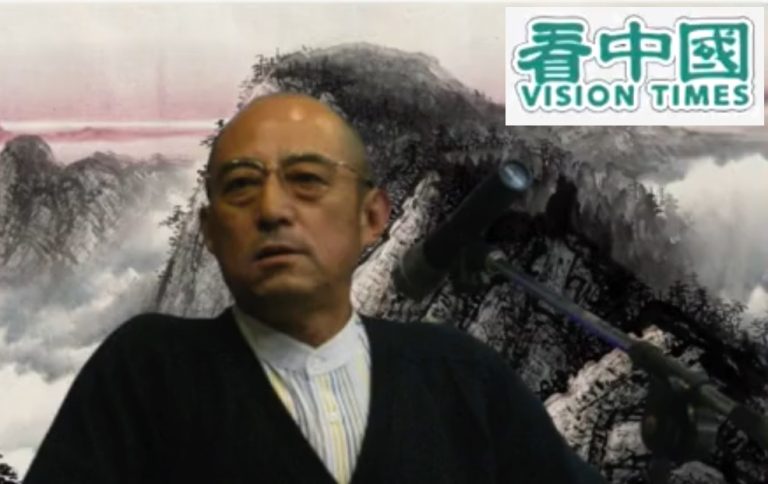A F-16 fighter jet of the Republic of China (Taiwan) Air Force was forced to make a “hard landing” at an airport in Hawaii after its landing gear failed to deploy on June 6, according to several media reports. The incident took place at 2:45 p.m. local time, Hawaii’s Department of Transportation (DOT) said.
The crash-landing comes days after a 23-year-old Taiwanese pilot died when his AT-3 Tzu Chung jet trainer crashed into a mountainous area in Kaohsiung, located in southern Taiwan, on May 31.
Although there were no reports of injury during the incident — the event was the latest in a series of accidents to befall Taiwan’s military — and has raised questions about the safety and condition of Taiwanese fighter jets.
RELATED:
- Australia Accuses Chinese Jet of Intercepting Its Surveillance Plane and Endangering Crew
- China’s Construction of ‘Most Advanced’ Aircraft Carrier Nearing Completion: Satellite Images
- Canada Slams China for ‘Harassing’ Its Patrol Aircraft
- Biden: US Would Get ‘Involved Militarily’ to Defend Taiwan From Attack, But Washington’s Strategic Ambiguity of China Continues
Hawaii News Now reported that the fighter “came to rest on its nose” after the emergency landing, and said the pilot used the “jet’s tail hook to slow down after the front landing gear failed.”
Hawaiian officials from the DOT added that the jet did not appear to suffer any serious damage, and they had not received any reports of injuries from the pilot.
Success
You are now signed up for our newsletter
Success
Check your email to complete sign up
According to other media outlets in Hawaii and Taiwan, the F-16 had been used for training missions at the U.S. Luke Air Force Base in Arizona. The jet was scheduled to make a refueling stop in Honolulu before flying back to Taiwan.
The accident forced Honolulu’s Daniel K. Inouye International Airport to close one of its runways for several hours as it worked to clear the jet from the site, DOT officials were quoted as saying.
State transport department spokesman Jai Cunningham said that the only detail he had on the F-16 was that it was a “visiting aircraft from a unit outside Hawaii,” and said the incident is currently undergoing investigation.
Taiwan’s Ministry of National Defense has also yet to provide any comment on the incident — the second to take place this year in relation to the U.S.-made F-16 jet.
Fatal mishaps
Prior to the fatal crash on May 31, Taiwan’s military has faced a number of accidents involving its fighter aircraft over the years, with several of those incidents taking place over the span of a few months this year.
This Jan. 11, an upgraded version of the F-16V — the most advanced fighter jets in Taiwan’s possession — crashed into the sea off the island’s west coast and killed the pilot.
The island’s air force announced that the F-16 went missing over the sea off western Taiwan 30 minutes after it took off from the island’s southern Chiayi air base for routine training.
Following that accident, the ROC Air Force suspended F-16 combat training for over a week before resuming again in late January.
On March 14, an Air Force Mirage 2000 fighter jet crashed off the country’s east coast. The pilot was luckily able to eject himself before the aircraft crashed and was rescued shortly after.
Long term harassment
Concerns have also been brought up in relation to China’s People’s Liberation Army (PLA)’s constant harassment of Taiwan and if these incidents may have resulted in quicker degradation of the ROC’s equipment.
In recent months, the PLA has run hundreds of sorties near Taiwan’s airspace, while undertaking various drills to simulate an invasion of the island.
The Chinese Communist Party (CCP) views Taiwan as a renegade province and rightful part of its territory. For years now, the mainland Chinese regime has used violent rhetoric and threats in vowing to reclaim the self-ruling island by any means necessary — even going as far as threatening to use military action in achieving this goal.
The U.S. government has also confirmed on several occasions that they would come to the self-ruling island’s defense should an invasion from the People’s Republic of China (PRC) take place, and has provided the island with defensive weapons and technical training under the Taiwan Relations Act (TRA) enacted in 1979.
Though Washington does not recognize Taiwan as a state under international laws, it has continued to maintain informal relations with the ROC.













